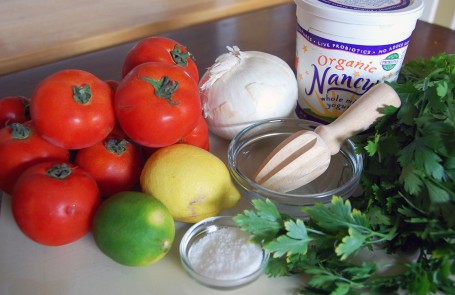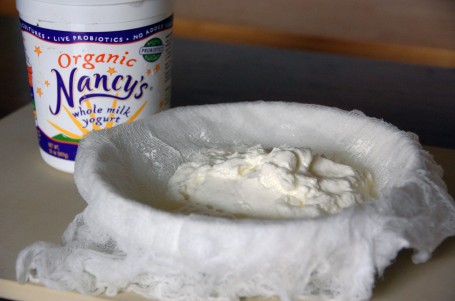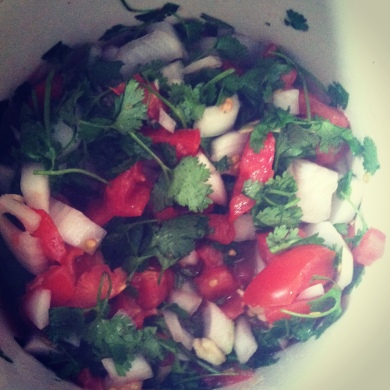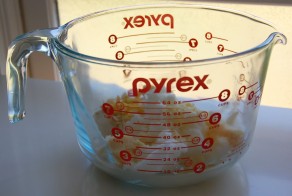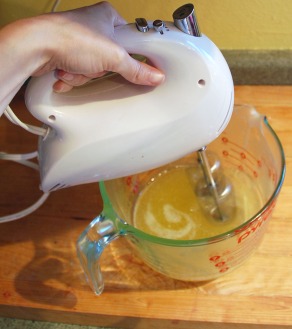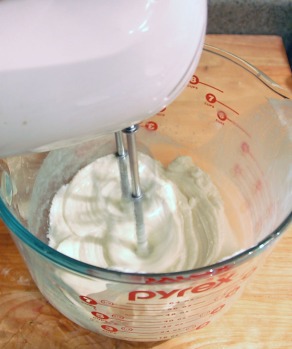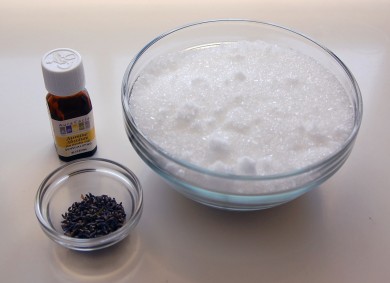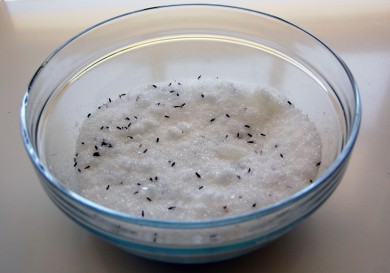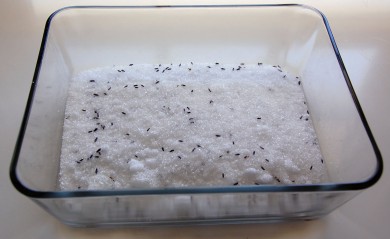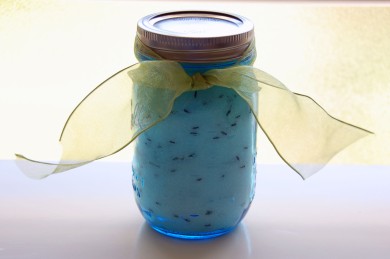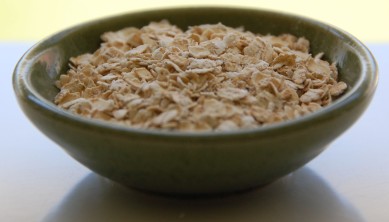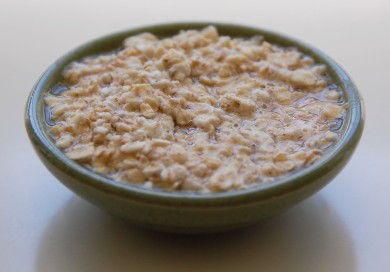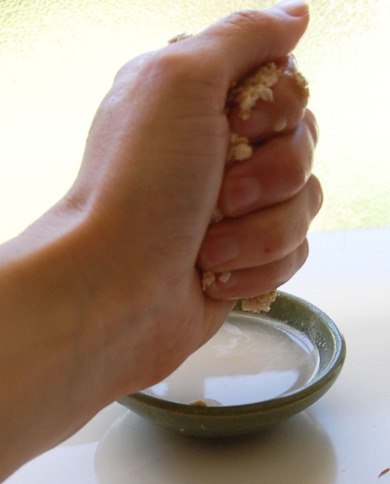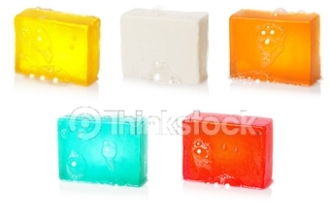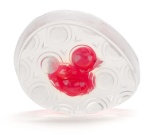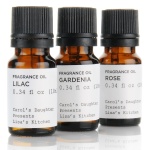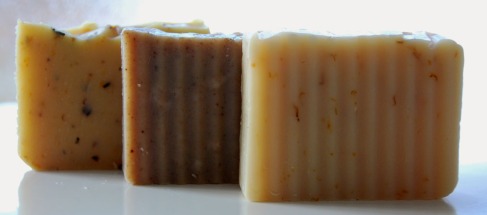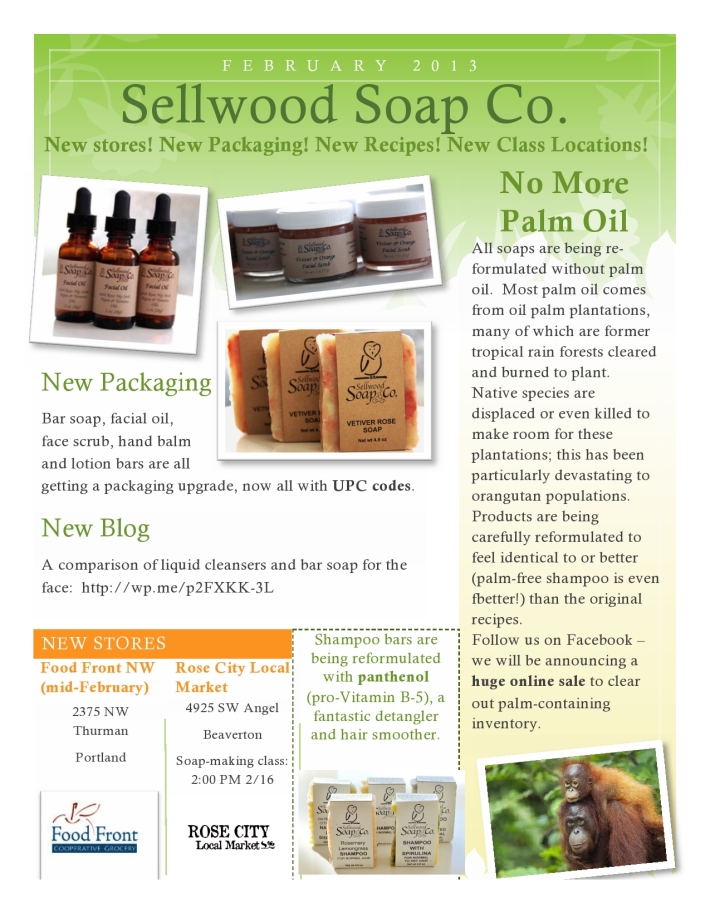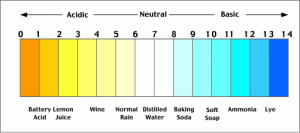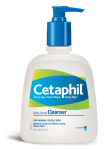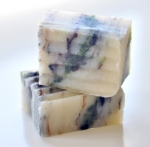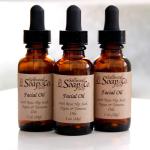 Click here for the Sellwood Soap Facial Oil.
Click here for the Sellwood Soap Facial Oil.
Facial Oil? Haven’t we been warned that putting oil on our face will clog pores, cause break-outs and otherwise wreak havoc on our complexion? So I am suggesting what?
Actually, applying natural oils on the face has been done for thousands of years – many are not only non-comodegenic, but also oils are incredibly healing, anti-inflammatory and nutritious. Many are more likely to treat acne than cause it.
Also, choosing pure oil (water-free) products eliminates the need for preservatives, emulsifiers, stabilizers and other chemicals that can clog pores, irritate skin and pollute the environment.
The vast majority of chemicals added to your typical white lotion are there because of the water and don’t support skin health at all. Don’t get me wrong, lotion is an incredibly convenient, lovely product. It can also be made using very gentle and non-toxic preservatives plus any number of ingredients that are beneficial to your skin…it can be done right. It isn’t always, though, and it is difficult for the average person to decipher which ingredients are safe or even beneficial and which are controversial and potentially toxic. As a chemist, even I can’t remember every cosmetic chemical out there or how safe it is.
Lotions are emulsions, typically of water and oil….very little oil and very much water. Water grows bacteria, especially at room temperature and oil feeds bacteria. Emulsions of water & oil are therefore preserved using any number of (often strong, broad-spectrum) chemicals, some of which work by releasing formaldehyde (carcinogen) and others that are suspected or even known hormone disruptors (parabens). In addition, water and oil don’t 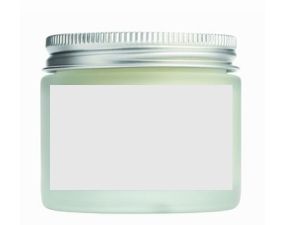 just magically come together to make a beautiful, creamy product – chemical emulsfiers are required to bring them together and additional chemicals are added to keep them together and give them a long shelf-life. This is all done for your safety and to give you a perfectly smooth product…but it is arguably a lot of work, cost and amounts to excess chemical exposure.
just magically come together to make a beautiful, creamy product – chemical emulsfiers are required to bring them together and additional chemicals are added to keep them together and give them a long shelf-life. This is all done for your safety and to give you a perfectly smooth product…but it is arguably a lot of work, cost and amounts to excess chemical exposure.
It is also arguably a long, awkward route to softer skin without the health benefits of simple, tried and true natural oils. Sure, you can add additional chemical skin-softeners, anti-oxidants, vitamins and anti-aging compounds…but have you looked up the benefits of rose hip seed oil or argan oil for adult acne or aging skin? How about rice bran’s ability to fade scars and even skin tone? Pretty miraculous, powerful and beautiful stuff, if you ask me…not to mention simple. On a personal note, I have never had more even, brighter skin and am so glad to be completely free of creams.
What’s the catch, you ask? I’m not really sure, I’m still asking myself this. Or perhaps the catch is just for the manufacturer (me); there is certainly less mark-up than selling you a jar of mostly water. A body oil or face oil is in a small container (it is much more concentrated) so tends to be a tougher sell than it’s big bottle of lotion neighbor. You need much less of a facial oil than a typical cream, so it may be a slight adjustment to dial in the right application for your skin…other than it being a bit “different,” I can’t think of any other catch.
To use a face or body oil, gently rub a few drops on clean, damp skin (it absorbs most quickly when applied to moist or wet skin). The oils used are non-comodegenic, they will not clog pores and each oil has been chosen based on its benefits to the skin. Even acne users should try it – acne can be caused and/or exacerbated by chemicals in conventional face creams and from excess oil production. Adding oil to your face can actually help calm your skin and reduce oil production.
Below is a list of oils that I believe in and have chosen to include in my face oil; below that is a list of ingredients in conventional creams… you’ve seen some of the chemicals before if you read my original blog on preservatives in lotions.
If you’re still not convinced after all of this, try using olive oil first. A facial oil will feel a bit lighter but very similar. The advantage of a blended oil is that it will contain multiple oils with loads of benefits, but olive oil alone is fantastic (and less expensive, many of these oils used are expensive).
These are the oils that I’ve chosen to include in the Sellwood Soap Face Oil.
Rosehip Seed Oil: High in vitamins A & E. Used as a natural alternative to prescription acne medication because of its high vitamin A content (Reduces adult-onset acne!). A lightweight, gentle oil. Used to treat eczema and gentle enough to use on psoriasis. Assists with skin renewal. Anti-aging compounds.
Rice Bran Oil: Long used as a moisturizer in Japan. Rich in phytosterols, which reduce skin inflammation. Evens skin tone. Fades scares. Protects skin from sun damage.
Sunflower Seed Oil: Lightweight feel. Naturally anti-bacterial. A good oil for acne sufferers.
Extra Virgin Olive Oil: Very high in omega fatty acids and vitamin E. Has a long history of use as a moisturizer.
Chia Seed Oil: Chia seeds are a “superfood” with even more omega-3 than flax. Rich in proteins, fats and vitamins, chia seed oil is known for being one of the best oils for relieving itchy, dry skin and preventing trans-dermal water loss.
Argan Oil: A rare and wonderful oil, a thicker oil so added sparingly. One of the best oils at filling fine lines and reducing stretch marks. Very high in vitamin E.
Avocado Oil: Strong anti-bacterial properties in addition to being a very moisturizing and nutritious oil. Penetrates deeply into skin, bringing with it anti-inflammatory properties. A great oil for relieving itchy skin.
Cranberry Seed Oil: Contains one of the highest levels of anti-oxidants of any of the vegetable oils. Powerful anti-aging oil. Protects skin from sun damage.
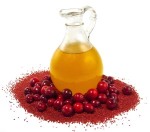
Amyris Sandalwood: A calming, earthy smell, known for reducing stress. A thick essential oil, also very moisturizing.
Rosemary: One of the best essential oils for your face, rosemary essential oil improves circulation and is a natural antiseptic.
Common ingredients in facial creams (Note that most of these chemicals are simply copied and pasted from ONE commercial face cream):
C12 15 Alkyl Benzoate: Thickener, emulsifier.
Butylene Glycol: Used to thin creams, and as an emollient. Petroleum based.
Glyceryl Stearate: Emulsifier, skin softener.
PEG 100 Stearate: A “polyethylene glycol” compound. May be vegetable-based or synthetic. Synthetic versions may have carcinogenic impurities (1,4-Dioxane, lead, iron, or arsenic). Should not be used on broken skin.
DMDM Hydantoin: Broad-spectrum, anti-microbial preservative that works by releasing formaldehyde (carcinogen).
Dimethicone: Silicone-based skin softener. Traps moisture, prevents skin from breathing. Is listed as non-comodogenic but there is some controversy about it trapping bacteria on skin.
Isopropyl Myristate: A solvent used to give lotion a slick feel. Dries skin, can cause cracking and fissures in skin.
C18 36 Acid Glycol Ester: Wax emulsion stabilizer.
Petrolatum: Petroleum jelly. Added to prevent trans-dermal water loss.
Propylene Glycol: Used to thin creams, and as an emollient. Petroleum based. Also used as antifreeze.
Phenoxyethanol: Broad-spectrum anti-microbial agent. Generally regarded as safe, though not recommended for use by nursing mothers.
Mineral oil: Petroleum based. Clogs pores.
Sodium Stearyl Lactylate: Emulsifier.
Sodium Benzoate: Preservative. Creates benzene (carcinogen) in the presence of citric or ascorbic acid (vitamin C).
Methylparaben, Butylparaben, Ethylparaben, Isobutylparaben, Propylparaben (“the parabens”): Broad-spectrum anti-microbial agents. Suspected hormone disruptors.
BHT: Synthetic preservative. Linked to cancer, behavioral problems, and organ toxicity.
Tetrasodium EDTA: A stabilizer. A persistent environmental toxin linked to cancer and organ toxicity.
I hope that this information is helpful to you and encourage you to learn more! If you think “that wouldn’t work for me,” I challenge you to give it a try. Look up (at the University of Google, of course) “olive oil benefits for face” or “rosehip oil benefits for face” or “cranberry seed, argan, etc.”
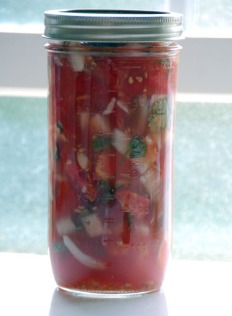 You can also ferment salsa in mason jars. A small-mouth lid can be used to keep salsa submerged in liquid (fermentation is an anaerobic process, so it’s important to keep the food submerged and thus not exposed to air or it will rot in a bad way instead of a good way).
You can also ferment salsa in mason jars. A small-mouth lid can be used to keep salsa submerged in liquid (fermentation is an anaerobic process, so it’s important to keep the food submerged and thus not exposed to air or it will rot in a bad way instead of a good way).